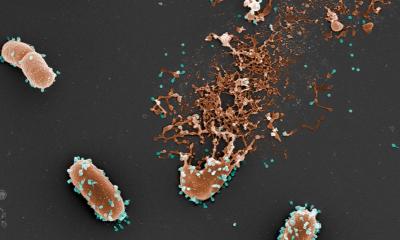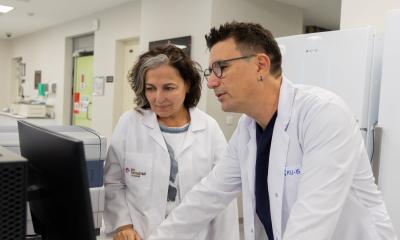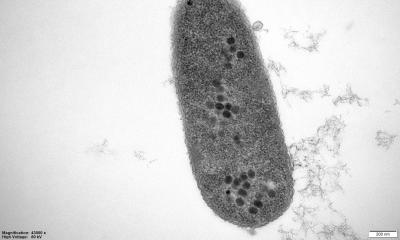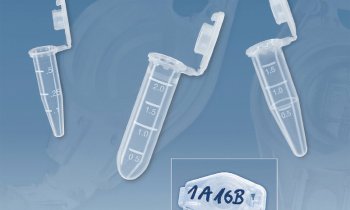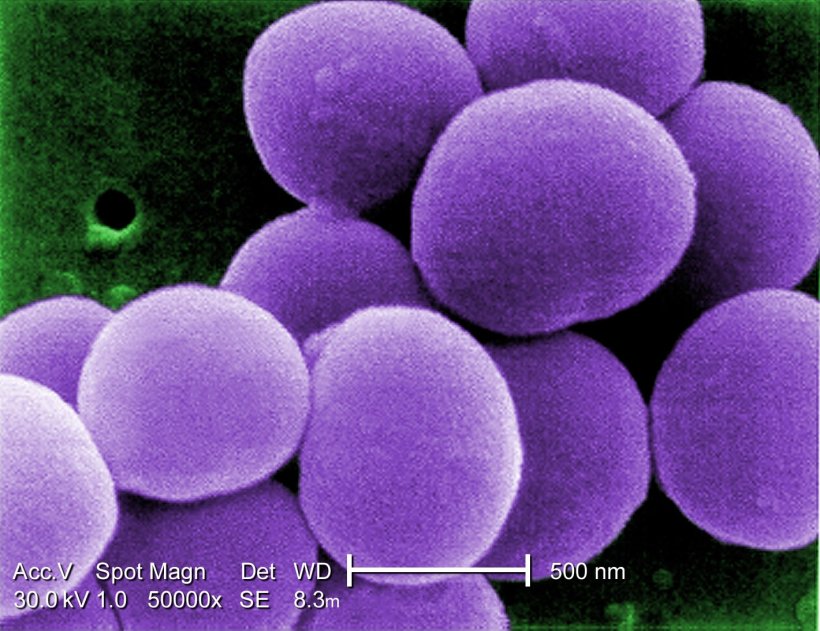
Image source: CDC/ Matthew J. Arduino, DRPH; photo credit: Janice Haney Carr, Staphylococcus aureus VISA, marked as public domain, more details on Wikimedia Commons
News • Study on Staphylococcus aureus
Understanding bacterial antiviral defenses to tackle antibiotic resistance
Antibiotic resistance is a global health challenge that could overtake cancer mortality within a few decades.
In a new study published in the scientific journal Nature Communications, researchers at Umeå University, Sweden, show that the emergence of resistance can be understood in the mechanism of how bacteria build up defences against being infected by viruses. It is about genes in the bacterium that interfere with the attacking virus's ability to multiply.

Image source: Umeå University; photo: Mattias Pettersson
"A key to antibiotic resistance might be the use of viruses to kill bacteria, however, the systems that bacteria employ to defence themselves against viruses are unknown. Understanding these systems opens up for research into how we can break down the defence so that serious infection disease can be treated in the future," says Ignacio Mir-Sanchis, Assistant Professor at Umeå University and the study's lead author.
The Umeå researchers have studied the bacterium Staphylococcus aureus, which is a common but potentially fatal bacterium in cases such as septic shock and pneumonia. A subgroup of S. aureus has become multi-resistant to antibiotic treatment and thus poses a major danger to public health. In some countries, a quarter of S. aureus is now multi-resistant, in Sweden only 1%.
However, the bacteria themselves are vulnerable to infection by a type of virus called bacteriophages, or just phages. Throughout evolution, bacteria and phages have undergone an arms race in which phages infect bacteria, which in turn develop mechanisms to resist the attacks. Much of this defence is encoded in the part of the bacteria's genome that can easily be transferred between bacteria, the so-called mobilome. Such a transfer can mean that otherwise harmless bacteria can turn into lethal. This is because the mobilome often carries genes that are responsible for the production of toxins, i.e. toxic substances, and for resistance to antibiotics.
Recommended article

Article • Bacterial defense mechanism
Antibiotic resistance: a global threat to healthcare
Antimicrobial resistance (AMR) is becoming more prevalent around the world, constituting a serious threat to public health. When bacteria acquire resistance against antibiotics, common medical procedures – for example, in surgery – become impossible due to the high infection risk. Keep reading to find out about AMR research, development of new antibiotics and antibiotic alternatives.
The research group has been able to identify a specific set of genes in S. aureus mobilome that confer immunity against infection with phages. This finding was possible thanks to Umeå University's cryoelectron microscope. These genes interfere with the ability of phages to spread and multiply. This happens because a key protein expressed by one of the genes forms a structure around an important protein encoded by the phage's genome, thereby blocking the phage's ability to copy its DNA and thus unable to infect more bacteria.
"The discovery of this mechanism could be a door opener to understand several aspects of bacterial pathogenesis. On the one hand, we now understand better how resistant bacteria defend themselves against viruses. On the other hand, because these set of genes also encode for toxins and antibiotic resistance genes, it may therefore turn out that this is an important piece of the puzzle in the fight against antibiotic resistance," says Ignacio Mir-Sanchis.
Source: Umeå University
08.04.2025



